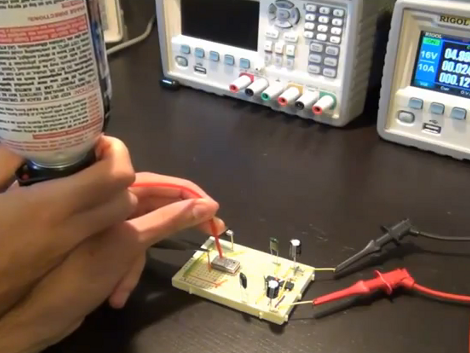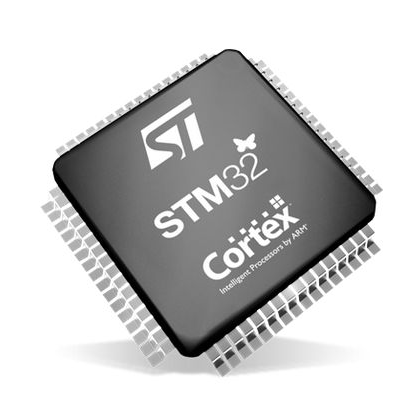
Make sure your test equipment is handy, then give this video series about crystal oscillators a spin. [Shahriar] of the Signal Path Blog put together a four-part video blog post totaling about an hour. In the discussion he covers the ins and outs of crystal oscillators and ring oscillators. His focus is on how these parts are used as timekeeping devices for microcontrollers. This isn’t a lecture that skims the surface of the topic, it takes you down the rabbit hole, discussing theory, how the devices are built, how to use them, and the pitfalls of doing so.
Our favorite part is in the fourth segment when [Shahriar] measures the effect that temperature has on crystals by spraying them with an inverted compressed air canister. We always thought we were just screwing around when freezing stuff like that. It didn’t occur to us that we were conducting serious experiments.
We’ve embedded the first segment of the video after the break.[youtube=http://www.youtube.com/watch?v=yYGwfVnGAdg&w=470]















Thank you HaD for featuring this. I hope the viewers would also find the other videos beneficial. We hope to make a few videos every month.
I loved it. I have some of those huge crystals too. I only just watched part 1. When I get to work I am going to watch the rest.
@mike watching videos at work?… Awesome!
Thanks for the post!
> We always thought we were just screwing around
>when freezing stuff like that. It didn’t occur to
>us that we were conducting serious experiments.
“you” must be amateurs ten. Compressed air is one of standard diagnostic tools when fixing electronics.
The freeze spray that is sold for diagnostics is the same stuff as the canned “air” (difluoroethane) with an internal dip tube. These oscillators are handy signal generators. I have a perf-board circuit with a 74HC4060 and a standard 14 pin socket wired with the common crystal oscillator package pinout to generate various clock signals.
Yes, the spray cans are very handy.
As for signal generations, it is interesting that even Agilent’s 70GHz synthesizers use a YIG oscillator at a few GHz and keep self-mixing and multiplying that signal to get to 70GHz, all of course use an internal 10MHz reference for syncing to other sources.
That is a mighty fine bench he’s got there.
I see 2 bench multimeters, 2 function generators and 2 power supplies. Awesome.
Thanks, in the past decade or so my lab has been growing slowly. Recently I bought some broken equipment from eBay and fixed them up. In future videos I will try to demonstrate more of how these equipment should be used properly. To use a spectrum analyzer for example can be an art!
HQ info in HQ video, a nice one! Watched it entirely.
Great Video!
Very nice presentation and demonstrations!
Great stuff. Watched the whole thing in one go. This is very relevant to what I am learning in school.
Thank you HaD for posting, thank you to the author of the video.
Great videos, I didn’t expect to see my ECE331 TA on HaD lol. Shahriar, are you still using that tablet computer or have you moved on to an ipad?
Hey Mike, nice to talk to you again. As for teaching, I am an adjust professor at Columbia university in NYC, do you want to take another course? ;)
I’m no EE, but I’m certain there are now flaws with these presentations. Great videos and also great that people take the time to create, and share them. Thanks to Shahriar.
wow
just wow
watched all 4 parts
excellent vid
I loled at part 4 when he starts taking out the ones with ovens in them and was like, “lol damn”. Never knew there were such things with ovens on oscillators.
Very nice videos!
Using big old crystals to show how they work was a great idea indeed. Well done!
BTW, the bigger ones in the first video are called FT-243, and they were so big that you actually could change their resonating frequency by making the crystal element thinner using sandpaper. That task required a lot of care but many Ham Radio operators did it in the past when men were men and crystals cost a fortune.
I would also love some similar video on practical uses of SAW resonators, which are very different from crystals and a bit harder to use properly, also due to their higher working frequencies.
Well done anyway!
Top tip from the video: ‘Amateurs often use oscillator modules’.
As a noob on the practical side of digital electronics, I’ve spent far too long trying to find appropriate R and C values to get my crystal oscillators oscillating – it never seems quite so straightforward as the theory. If I just used a module rather than a raw crystal, I might have learnt a bit less, but I might also have made more progress!